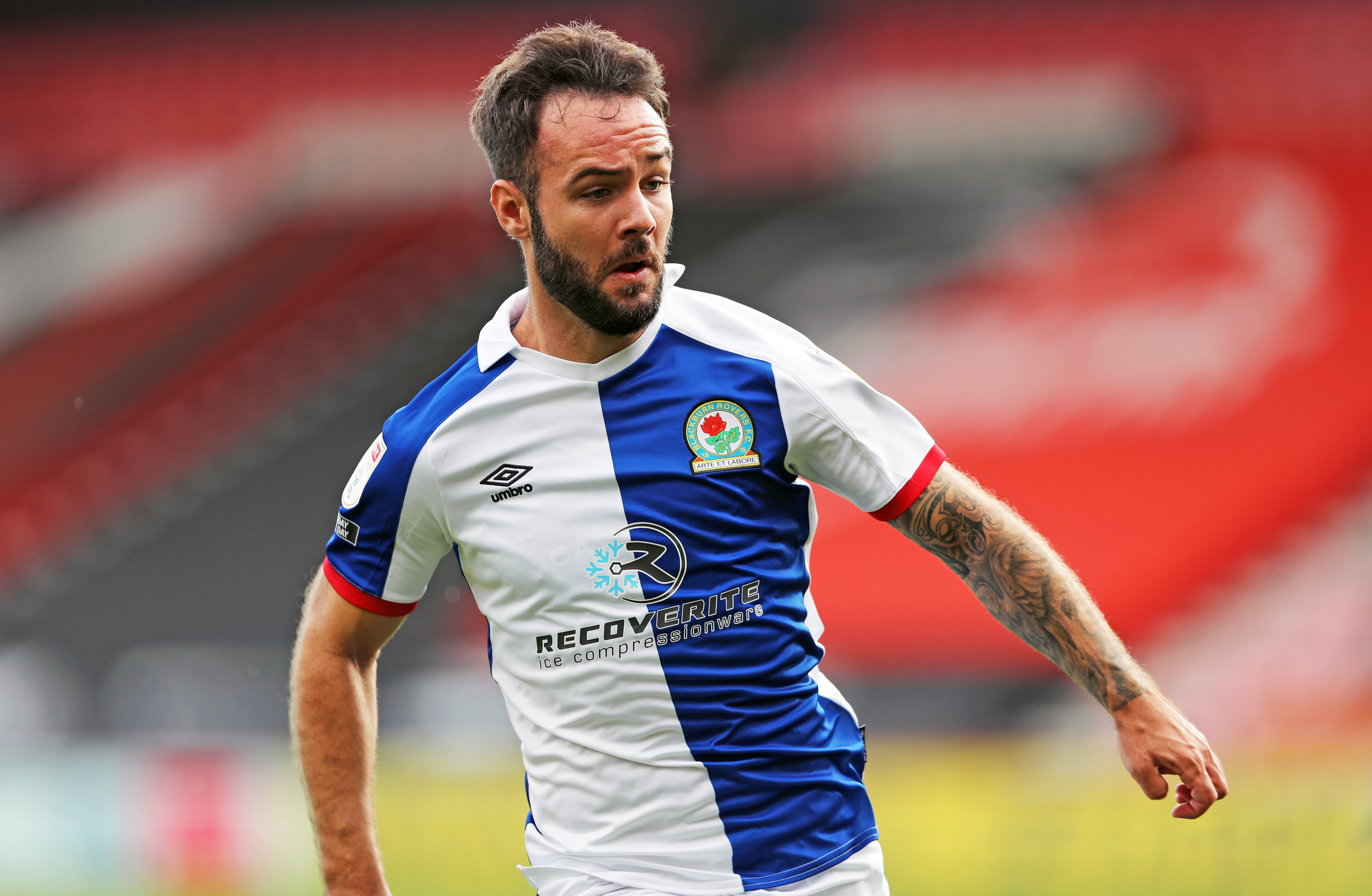Last week, we highlighted the ‘Similar Player Search’ function within StatsBomb IQ and provided some examples of its utility. We also ran a special request line on our Twitter account. This week, we are going to look at a concrete example of a doppelgänger in practice: Adam Armstrong of Blackburn Rovers. Armstrong has begun the Championship season in fine fettle. Fourteen matches in, he not only leads the league with 13 goals (including three penalties) but his underlying numbers are also off the charts, quite literally in fact:
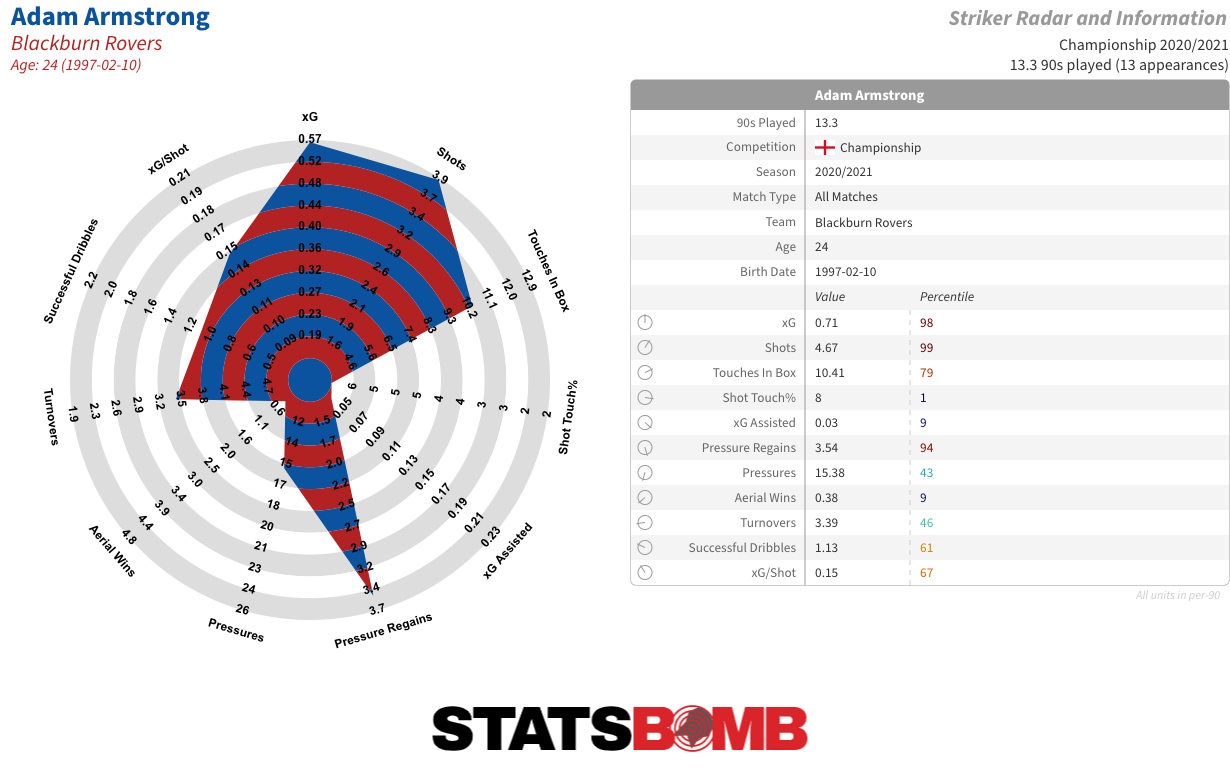
A sum of 0.71 xG per 90 puts Armstrong in the 98th percentile for that metric and some distance ahead of anyone else in the Championship. Consistent minutes through the centre have also seen him begin to post up 99th percentile shot numbers. He doesn’t create much for teammates, doesn’t win many aerial duels and a high proportion of his touches are shots. In short, he profiles like a pure goalscorer. Add in a solid contribution to Blackburn’s pressing game -- they are one of the most active teams in the Championship -- and you have the sort of output that produces comparisons to some of the finest strikers in Europe when you run his numbers through our ‘Similar Player Search’ function.

It remains to be seen whether Armstrong can maintain his early-season numbers over the full course of the campaign, but that is exalted company. There is, though, another statistical match just outside that top five that is particularly compelling, one that we’ll come back to once we’ve told the story of Armstrong’s winding path to a potentially breakthrough year -- a story that illustrates that player development is rarely linear.
On the opening day of the 2015-16 League One season, an 18-year-old Armstrong scored both goals for Coventry City in a 2-0 win over eventual league winners Wigan. One week later he would score two more in a win away to Millwall -- another strong side who finished runners up in the playoffs. It was quite the statement. Nobody expected much from a kid on loan from Newcastle but the talent he possessed -- the pace, the movement, the finishing -- was immediately apparent. The goals at Millwall showcased his sheer audacity: a 36-yard lob over the keeper was followed by a delightful chipped finish after leaving a centre back in the dust.
Armstrong went on to score 20 goals for Coventry that season in one of League One's most exciting teams. He was the central striker in a 4-2-3-1 formation, with young academy graduate James Maddison as the 10, Liverpool loanee Ryan Kent on the left, and Jacob Murphy on the right. The double pivot consisted of John Fleck and, erm... Joe Cole. That team was a nightmare for League One defences and it created the perfect environment for Armstrong to thrive.
The following season he was loaned to Barnsley in the Championship and struggled for game time despite managing 0.42 goals + assists per 90. The next season saw a loan to Bolton, one of the Championships poorest attacking sides. He only managed one goal, so Newcastle recalled him in January and sent him out to Blackburn in League One. There, he was reunited with his former Coventry manager Tony Mowbray. Blackburn got promoted that season and immediately purchased Armstrong outright. But back in the Championship, he struggled in a unfamiliar wide role:
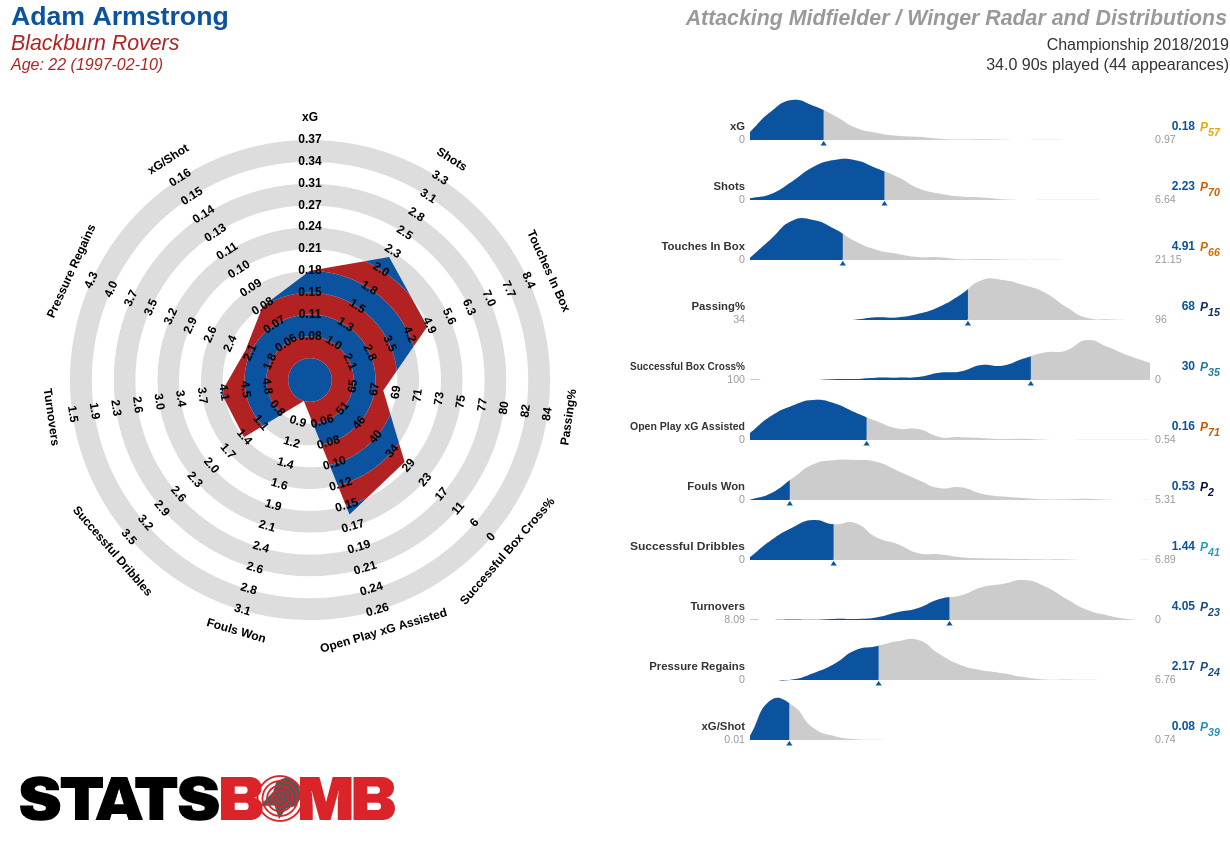
The following season he got more time as a nine, and the goals started flowing again: 16 for the season, alongside six assists. But the underlying numbers weren't as impressive and his goal tally was largely propped up by unlikely returns on long-rangers:
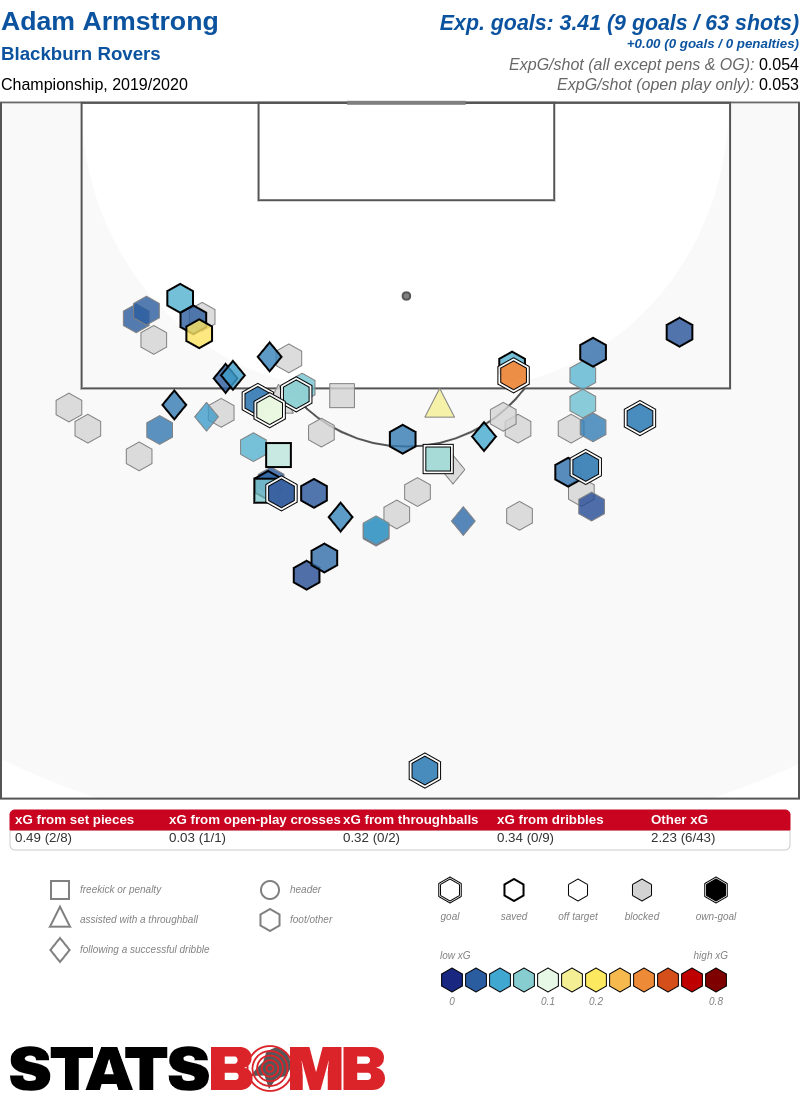
This season though, Armstrong finally finds himself in a similar environment to one he excelled in at Coventry. He's the sole striker, and when Bradley Dack returns from injury he'll have a player just behind him who was the other standout number 10 alongside Maddison in that 2015-16 League One season.
Young winger Ben Brereton plays on the left, Liverpool loanee Harvey Elliott is on the right, while Lewis Holtby takes up the Cole role as midfield creator That context has helped produce the stellar statistical profile that makes him a close match, at least at a lower level, to some of the top strikers in Europe. But we’ll now return to the player who feels like his most apt match: Danny Ings.
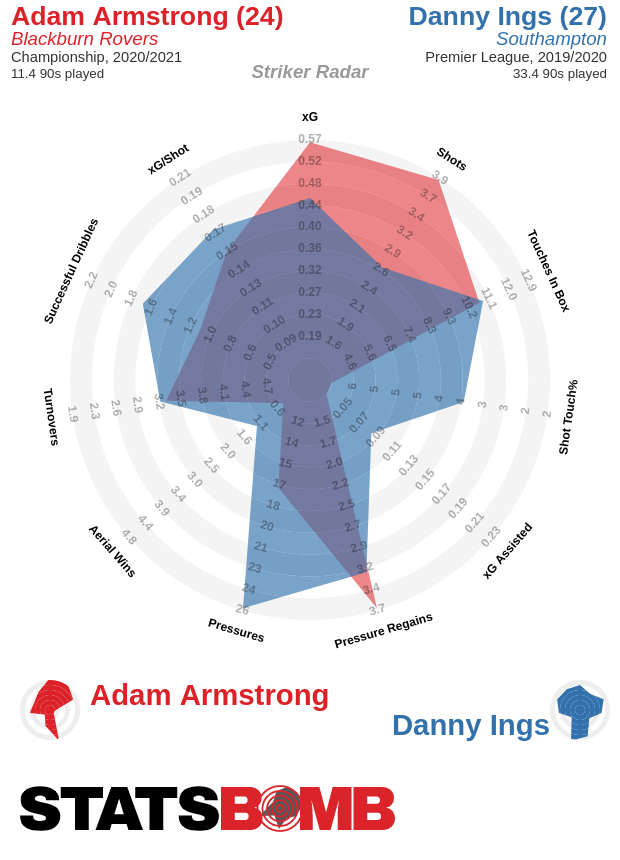
There are plenty of similarities between the two goalscorers. Out of possession, both function well in high press teams, but you can see how much more Ralph Hasenhüttl demands from his strikers as Ings manages nearly nine more pressures per game. On the ball, both show great movement to get the quality of chances they do, and they can both finish well off of either foot. Movement in behind has always been one of Armstrong's strong suits, especially in transition:
If he's in your blind spot you can bet he's about to get in front of you. Ings can't leave defenders behind like Armstrong can -- not since the injuries anyway -- but he's still a clever operator in the blind spot and offers much more in build-up play when he drops off the front to receive. You can see Ings edges Armstrong in xG assisted and successful dribbles, while a lower proportion of his touches are shots. Armstrong is getting better in this aspect though and you can see here against Coventry he was keen to take up a position between the lines during build-up play:
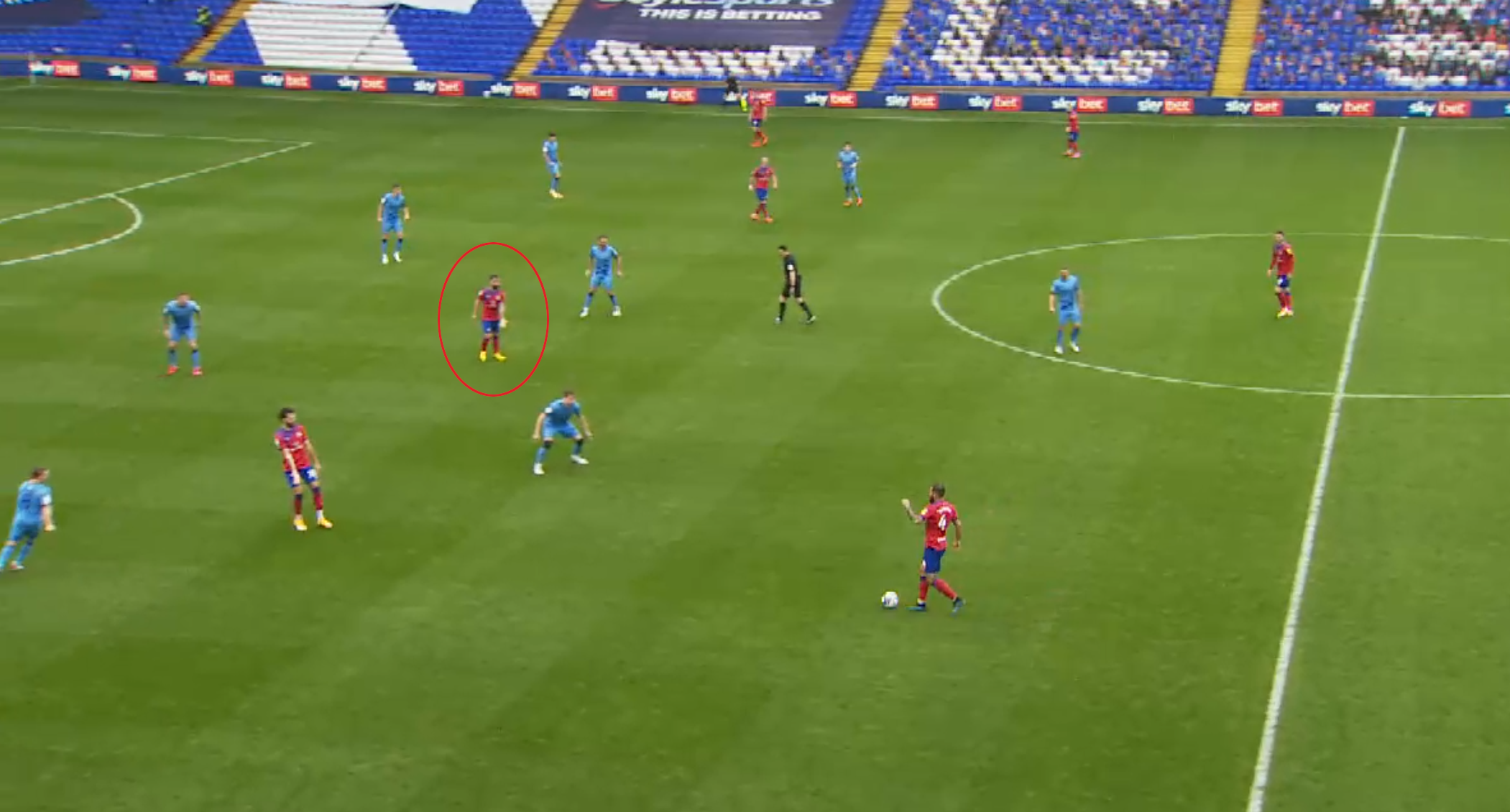
Back when he was playing for Coventry he would have sat on the last line here and expected Maddison to occupy that zone. As soon as Brereton receives on the turn, Armstrong is off like a rocket and gets himself a familiar goal.
Coincidently, up until about a fortnight ago, Armstrong and Ings had accumulated exactly the same xG total and almost identical goal tallies over the last couple of years:
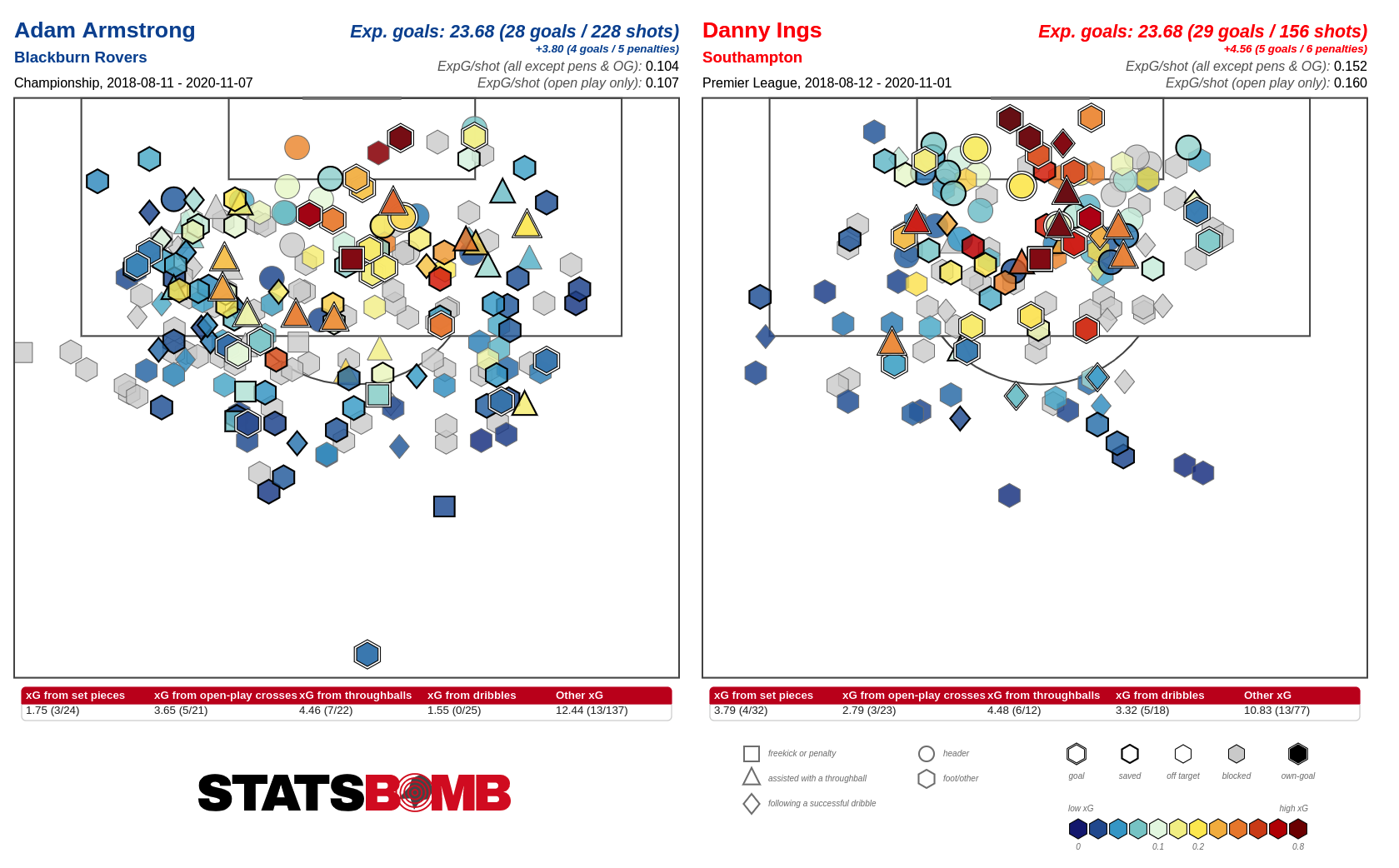
Both players overperformed their xG by a similar amount in that time, but they got there in different ways. Armstrong took more shots than Ings, who shot less often but from better positions. Shot selection is certainly one area Armstrong can improve on as Ings shows more awareness and maturity in that regard. Restricting the bad shots and choosing to move on possession instead will really help Armstrong scale his talents to the Premier League.
That is exactly where he might find himself next season, regardless of whether Blackburn are able to convert a solid start into a genuine push for promotion. If he does, a role as backup and eventual replacement for Ings at Southampton seem as good a fit as any.
